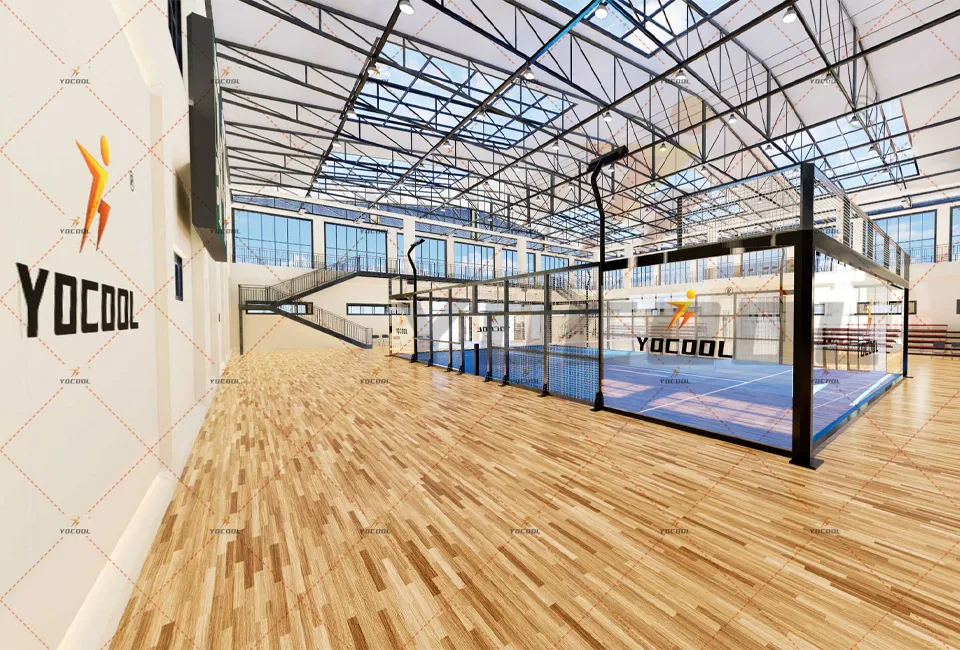

The rising popularity of paddle tennis and pickleball is no longer just a trend—it's reshaping how urban communities engage in physical activity. These two racket sports offer fast-paced gameplay, low barriers to entry, and social dynamics that make them appealing to all age groups. According to a 2024 report from the Sports & Fitness Industry Association, pickleball alone grew by 52% year-over-year in the U.S., while paddle tennis continues to dominate in Europe and Latin America. Both sports can be played on smaller courts, allowing developers to build more play areas within limited urban spaces. They also offer a more accessible option for retirees, families, and young professionals who want a competitive but fun form of exercise. The shared format and overlap in gear, play style, and rules have made paddle tennis and pickleball a double-feature attraction at clubs, schools, and fitness parks across the globe. Whether you're looking to join a local league or set up your own play area, it's clear that paddle tennis and pickleball are here to stay.

If you're considering creating a recreational area in your neighborhood or even on private property, investing in a paddle tennis outdoor setup can deliver high social and fitness returns. Outdoor paddle tennis courts are typically smaller than tennis courts, with dimensions that fit easily into schoolyards, hotel rooftops, or residential complexes. Unlike indoor courts, outdoor courts require durable surfaces that can withstand rain, UV rays, and temperature swings. Synthetic turf, modular tiles, and anti-slip coatings are commonly used to extend court life. Costs can range from $20,000 to $45,000, depending on the size, fencing, and lighting involved. Some modular systems even allow you to install courts on uneven surfaces or transform a parking area into a recreational space. The advantage of paddle tennis outdoor courts is their versatility: they serve for both formal tournaments and casual play. Plus, being outdoors adds a layer of enjoyment with natural light and fresh air, making it easier to encourage participation across all age groups.
For individuals or clubs wanting to keep gameplay more intimate, building a padel tennis single court is becoming a popular and strategic choice. Traditionally, padel courts are designed for doubles, but single courts require even less space and allow solo training or one-on-one matches. A standard padel tennis single court measures approximately 6 meters wide by 20 meters long, and its glass walls create a panoramic viewing experience while also supporting fast-paced ball rebounds. This format is ideal for apartment complexes, boutique resorts, and private villas looking to offer premium sports facilities in a compact footprint. Construction costs range from $15,000 to $30,000 depending on structural material, lighting, and location access. In Spain, where padel is already the second most popular sport, over 20% of new courts built in 2023 were single courts. These installations make it easier for clubs to increase play frequency and reduce wait times during peak hours. A padel tennis single court also provides great value for private users who prefer a low-maintenance, professional-level facility on their property.
Real estate developers and health professionals now recognize that amenities like paddle tennis and pickleball can significantly increase both property value and resident satisfaction. Properties that include paddle or pickleball courts as part of their amenity packages tend to sell faster and command higher rental prices. A recent survey by Urban Land Institute noted that buildings offering fitness features, especially racket sports, saw a 9-12% premium in market rates. These sports also promote physical wellness without requiring gym memberships, as players enjoy cardiovascular benefits, improved reflexes, and low-impact movement. Pickleball is especially attractive for older adults due to its slower pace and smaller court size, while paddle tennis draws a competitive younger crowd. The cross-generational appeal makes these courts highly effective for fostering community interaction. Developers who include paddle tennis and pickleball in parks, rooftops, or clubhouses also benefit from easier approvals during planning reviews, as municipalities increasingly favor health-oriented urban projects.
When planning your paddle tennis outdoor court, material selection is one of the most important decisions you’ll make. Unlike indoor courts that are climate-controlled, outdoor courts must endure sunlight, rainfall, and wind exposure year-round. Acrylic surfaces are a popular choice for their durability and performance under various weather conditions. Other options include synthetic turf or rubber-based floors that provide better shock absorption. For fencing, galvanized mesh coated with anti-rust treatments helps maintain a safe and visually clean court boundary. LED lighting systems with motion sensors reduce electricity consumption and enhance night visibility, making evening games more accessible. Also, consider adding shaded benches, water fountains, and a digital scoreboard to boost comfort and engagement. With the right materials, your paddle tennis outdoor setup won’t just last longer—it’ll encourage more consistent use. Consulting a specialist during the design phase can also help tailor the court to your climate, usage volume, and budget.
A padel tennis single court typically measures 6 meters wide by 20 meters long, which is more compact than the standard doubles format.
The cost ranges from $15,000 to $30,000, depending on materials, fencing, lighting, and site accessibility.
It’s ideal for both. Private users enjoy a low-maintenance, space-efficient option, while clubs use it to increase playing capacity and training flexibility.
In some cases, yes. Multi-use courts can be marked for both sports, but differences in net height and ball bounce may require minor adjustments.
Acrylic is commonly preferred for its weather resistance and smooth play surface, while synthetic turf offers a softer, joint-friendly feel.
Starts with Strategic Padel Court Solutions
Sports Facilities with Innovative Padel Court Construction
Revolutionize Sports Facilities with Custom Padel Court Construction
Master Industrial Racquetball Performance with Professional Equipment
Industrial Expansion Begins with Strategic Padel Court Construction Investments
Construct Future-Ready Sports Facilities with Industrial-Grade Padel Courts